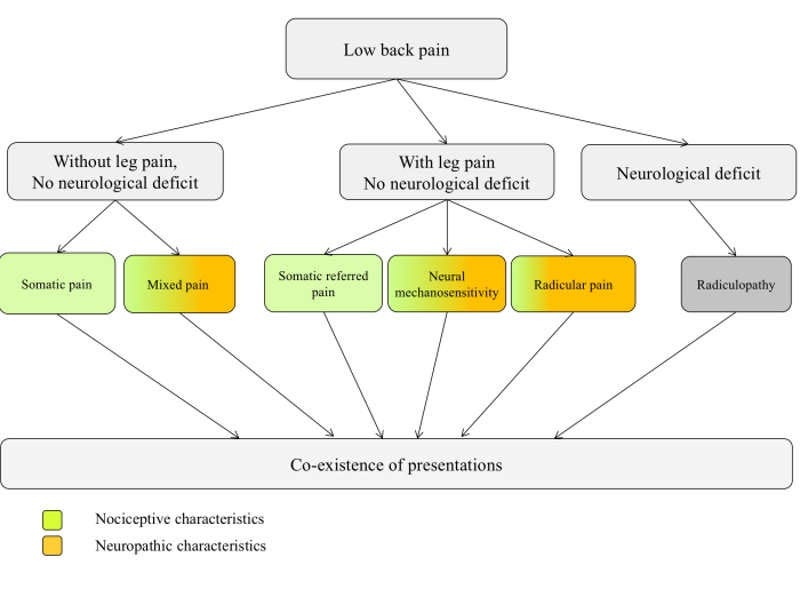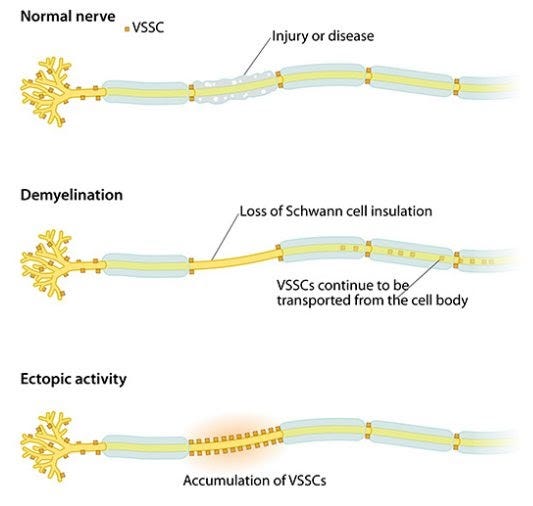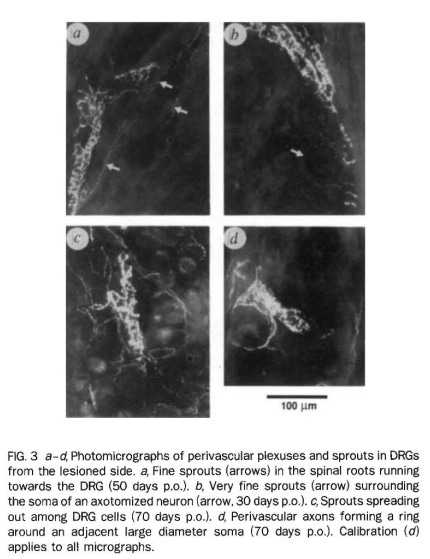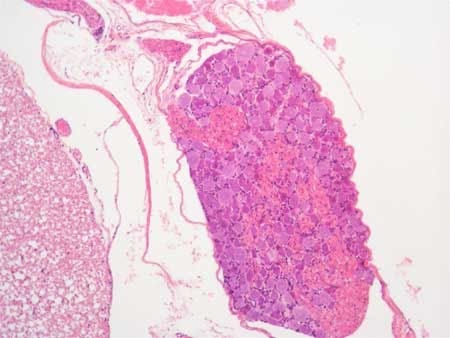We’re still working on the cover design for our upcoming book Understanding Sciatica - a frustratingly long back-and-forth process with the designer that I wish I’d started much earlier…
In the meantime, I thought I’d re-send this podcast that Annina and I recorded in September 2020. It’s still the most popular episode of the pod. Might nerve pain be the most interesting thing in the world?
Below are the timestamps for the Q&A, with some relevant pictures and links. (Please by aware if you are reading this through your podcast app, the pictures and links may not show). If you have not heard from Annina before, I recommend her episode of The Physio Matters Podcast as a good introduction on this topic. Today’s podcast takes more of a deep dive!
Timestamps
0.00 - 2:55: intro
2:55: is radicular pain neuropathic?
I reference Annina and Brigitte Tampin's classification for low back related leg pain which you can see more about here
Annina mentions the NeuPSIG grading system for neuropathic pain:
6:48: ectopic activity from abnormal impulse generating sites
Ectopic means "in the wrong place". Ectopic activity means action potentials arising from the wrong place in the nerve. For example, instead of arising in the peripheral terminals as they should, action potentials can be generated in the nerve trunk or the dorsal root ganglion. In entrapment neuropathies, this will typically happen when a patch of the nerve becomes demyelinated and ion channels lodge in that part of the cell membrane. This picture shows the process in a nerve that has been completely cut, but the concept is the same for nerves that are merely crowded out.
9:07: mechanisms of stress-induced radicular pain
I mention a paper by Elspeth McLachlan which found that after sciatic nerve ligation, noradrenergic axons in rats sprout into the dorsal root ganglion and form basket-like structures which can activate sensory neurons.
12:19: allodynia, wind up and other neuropathic pain features in radicular pain
14:55: reaction of dorsal root ganglion to nerve root injury
19:08: distal changes in radicular pain, loss of nerve fiber density
I mentioned a study by Andrasinova et al. that showed loss of intra-epidermal nerve fiber density in people with radiculopathy. This beautiful artwork by Kathleen Sluka shows intra-epidermal nerve fibers.
26:08: antidromic impulses
Antidromic impulses are action potentials that go "the wrong way". They are part of some normal physiological processes, I think, but when associated with pain and ectopic action potentials they are pathological.
One possible cause of antidromic impulses from dorsal root ganglion ectopia - pic from Sorkin et al.
28:48: why would nerve trunk blocks reduce nerve root pain?
I mentioned a paper from 1990 by Xavier et al. where they note that nerve blocks to the sciatic nerve trunk eases radicular pain, and suggest this might mean antidromic impulses are important for radicular pain. I also mentioned a study by North et al. that found nerve blocks distal to the nerve root ease pain.
Another interesting read is this paper from 1984 by Norden et al., who measured antidromic activity in the sural nerves of two people with radicular pain - activity that correlated with increases in symptoms.
34:05: avoiding pain or pushing through the pain
37:33: can we determine the underlying mechanism of radicular pain clinically?
Annina mentions case studies from McKenzie practitioners who can reverse loss of function, like a foot drop, through repeated movements. She suggests this might be a sign of ischaemia. I have not been able to find a video of this. But on Mark Laslett's course he showed a video of one of his patients who developed myotomal weakness - unable to heel walk - when sitting slumped but recovered strength with repeated extension.
40:47: oedema as a cause of compression
43:17: surgery for longstanding radicular pain
46:06: Annina asks me why I'm so interested in sciatica!
49:30 - end: discussing the role of observation and creativity versus rigour and quantitative data in science
Understanding Sciatica, with contributions by Annina Schmid, will be published…. soon?



















Share this post